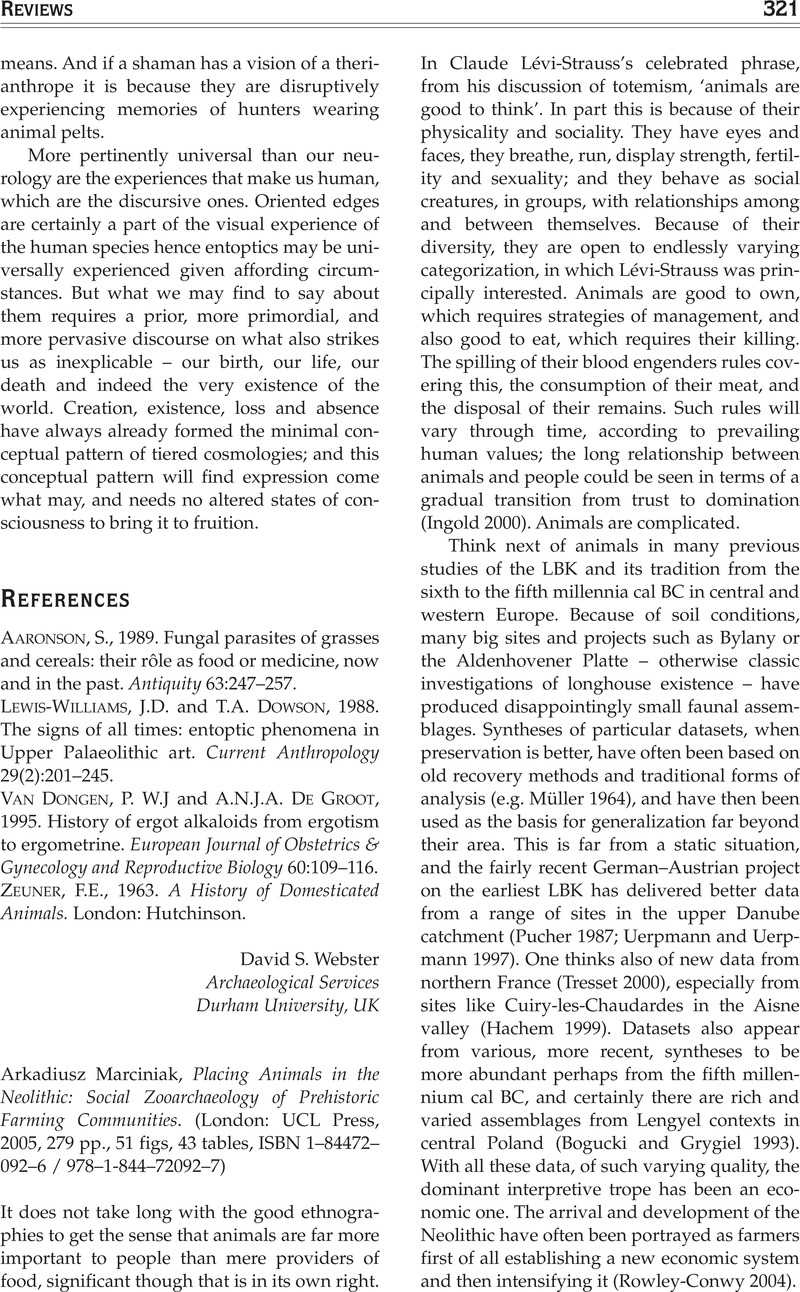No CrossRef data available.
Article contents
Arkadiusz Marciniak, Placing Animals in the Neolithic: Social Zooarchaeology of Prehistoric Farming Communities. (London: UCL Press, 2005, 279 pp., 51 figs, 43 tables, ISBN 1–84472–092–6 / 978–1-844–72092–7)
Published online by Cambridge University Press: 25 January 2017
Abstract
An abstract is not available for this content so a preview has been provided. Please use the Get access link above for information on how to access this content.

- Type
- Reviews
- Information
- Copyright
- Copyright © 2005 Sage Publications
References
Bogaard, A., 2005. ‘Garden agriculture’ and the nature of early farming in Europe and the Near East. World Archaeology
37(2):177–192.Google Scholar
Bogucki, P., 1988. Forest Farmers and Stock-herders: Early Agriculture and its Consequences in North-Central Europe. Cambridge: Cambridge University Press.Google Scholar
Bogucki, P. and Grygiel, R., 1993. The first farmers of central Europe: a survey. Journal of Field Archaeology
20(4):399–426.Google Scholar
Hachem, L., 1999. Apport de Farcheozoologie à la connaissance de Forganisation villageoise rubanée. In Braemer, F, Cleuziou, S. and Coudart, A. (eds), Habitat et société,
325–338. Antibes: Éditions APDCA.Google Scholar
Ingold, T., 2000. The Perception of the Environment: Essays in Livelihood, Dwelling and Skill. London: Routledge.Google Scholar
Jones, G., 2005. Garden cultivation of staple crops and its implications for settlement location and continuity. World Archaeology
37(22):164–176.Google Scholar
Lüning, J., 2000. Steinzeitliche Bauern in Deutsch-land: die Landwirtschaft im Neolithikum. Bonn: Habelt.Google Scholar
Müller, H.H., 1964. Die Haustiere der mit-teldeutschen Bandkeramik. Berlin: Deutsche Akademie der Wissenschaften.Google Scholar
Pucher, E., 1987. Viehwirtschaft und Jagd zur Zeit der ältesten Linearbandkeramik von Neckenmarkt (Burgenland) und Strögen (Niederösterreich). Mitteilungen der Anthropo-logischen Gesellschaft in Wien
117:141–155.Google Scholar
Rowley-Conwy, E, 2004. How the west was lost: a reconsideration of agricultural origins in Britain, Ireland and southern Scandinavia. Current Anthropology 45 (Supplement August-October 2004): 83–113.Google Scholar
Tresset, A., 2000. Early husbandry in Atlantic areas. Animal introductions, diffusions of techniques and native acculturation at the north-western fringe of Europe. In Henderson, J.C. (ed.), The Prehistory and Early History of Atlantic Europe:
17–32. Oxford: British Archaeological Reports, International Series 861.Google Scholar
Uerpmann, M. and Uerpmann, H.-E, 1997. Remarks on the faunal remains of some early farming communities in central Europe. Ant hropozoologica
25/26:571–578.Google Scholar


